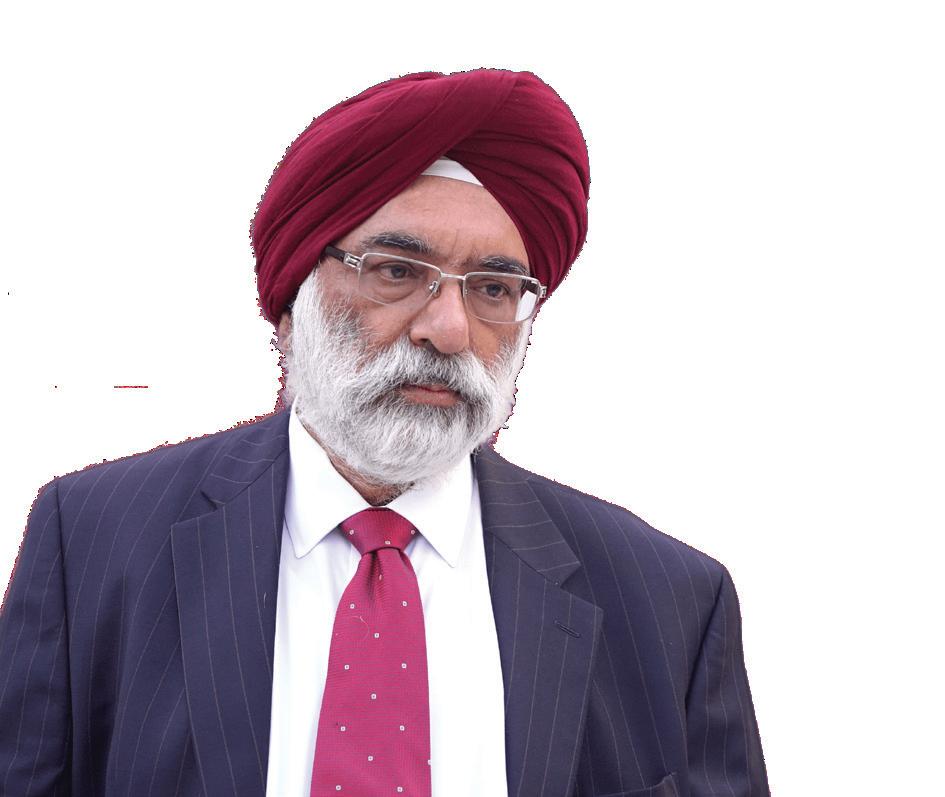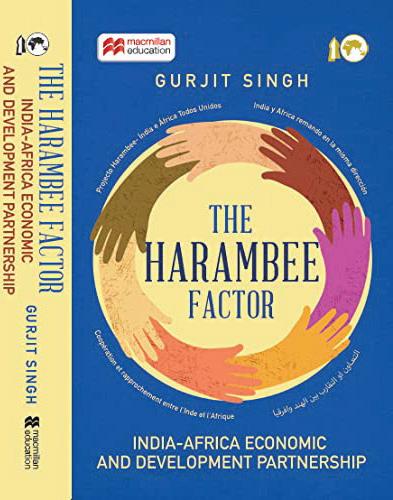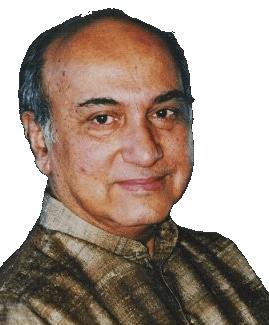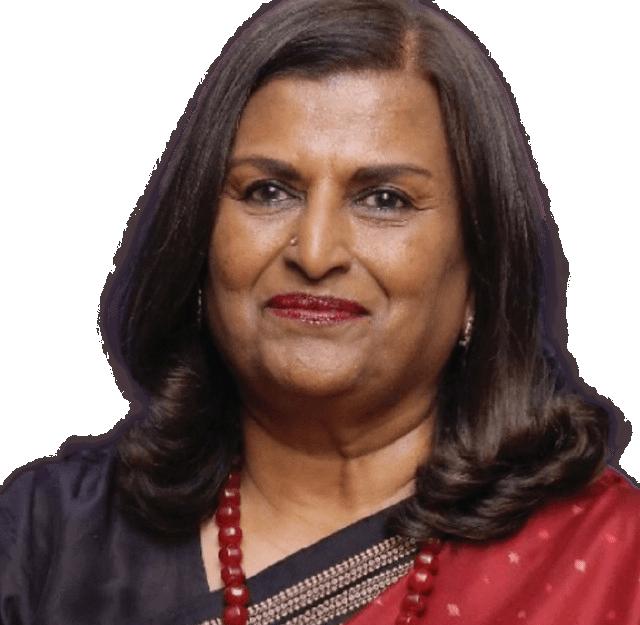
8 minute read
BEYOND THE HARAMBEE FACTOR
India has to compete with major powers like China and US to earn a place in the African marketplace.
The world is changing, and the relations between states, as between individuals, have become transactional. Today no one wants a relationship based only on legacy bonds, and the same is true for India’s evolving connections with Africa. In contemporary times, while Indian and African independence leaders may have shared common aspirations and beliefs and learnt from each other’s experiences, the modern generation is well over the past and looks forward to a more substantial basis for mutual interactions.
Advertisement
So, while during most of the 20th century, the rallying cry for India- African partnership may have been “Harambe” (meaning pulling together, partnership and a spirit of cooperation in Swahili), the Harambee Factor may no longer count as a binding block between India and its partners in Africa. This is even more relevant when major powers like China, the U.S. and the EU continue to court the continent which promises the most growth in times to come. Sadly, any Indian intercourse in the African context gets hyphenated with China; this must be overcome, and India should endeavour to carve out its own niche in the African landscape.
The Legacy Approach In Skill Development

Traditionally the Indian model of cooperation in Af- rica has rested upon three pillars- trade, private sector investment and skill development/ capacity building. Interestingly, this goes back centuries because if you visit Lalibela in Ethiopia, its 11the century rock-hewn churches have swastika symbols at the base, apparently carved by Indian master masons who left their signature behind! Another outstanding feature of the past was the Indian contribution to African human resources development. Emperor Halie Selassie has been quoted as saying that “India is the model which I wish to follow.” This would explain many Indian teachers, largely from Goa and Kerala, who were invited to teach in Ethiopian schools and colleges during the 1950s and later.
The Indian private sector has been active in Africa to energise trade with India. Since 2002, when the Focus Africa Programme was launched, India’s trade with Africa has ballooned from $5 billion to nearly $89 billion today, making India amongst the top 5 trading partners, despite there being no major trade concession agreement.
India also has a role in developing the professional military education of African militaries, a tradition that continues to date. Impressed by the performance of the Indian military in UN peacekeeping missions overseas, especially in Congo, where the Indian military contingent stood out for its professionalism and willingness to sacrifice, many newly independent African nations invited India to develop their military training insti- tutions while hundreds of African officer cadets were trained in Indian military academies. The Ethiopian Military Academy at Harare was the first to be opened with Indian help in 1958. Later, Indian Military Training Teams were deployed in Sudan, Ghana, Botswana, Nigeria, Tanzania, Zambia, Lesotho, Libya and Seychelles. This strengthened the view in Africa that India was a benign and non-interfering partner, a sentiment that, to an extent, survives to date. Not surprisingly, Ambassador Gurjit Singh quotes a French Speaking commissioner of the African Union (AU) saying, “China does more whereas India does better.”
Alongside the Military Training Teams (IMTs), India created the Indian Technical & Economic Cooperation (ITEC) programme in 1964, when India was widely recognised as the leader of the Non-Aligned Movement (NAM). The ITEC has endured and remains the most recognised Indian brand in Africa, prompting some young African parliamentarians visiting India to remark, “China builds our parliaments, and India builds our minds!” The idea of ITEC has today matured into Skill Development and Capacity Building
Capacity Building
In 2004, President Kalam gave the idea of the Pan African e-network, which was partnered with the AU across 47 countries. This was considered the largest spread of an Indian Project, facilitating telemedicine and Tele-education.Around the same period, as the Indian economy grew, India floated the Indian Development and Economic Assistance Scheme, under which
The problems for Indian investors in Africa are the “high cost of local financing, high cost of insurance, local banks in retreat, high credit risk and not enough DPRs.” These can be overcome by the following: -

MEA shouldn’t put grant funds into its projects but rather set up revolving funds for consulting companies. Once the consulting companies go to Africa and create their DPR’s, they can return the consulting money to revolving funds. Give the companies a 5–10year frame and fund it every year.
Secondly, give Lines of Credit to regional banks in Africa and to solid African banks, as there are no more Indian banks in Africa. From the interest from corpus, subsidise the lending to dian Investors who are coming Africa so that they get local financing at lower costs. This way, you are working on both the private sector and the local banking sector of Africa, which in turn will promote trade, invest- concessional loans were provided to African nations. Since many African countries were reluctant to knock on the doors of their erstwhile colonial masters, India afforded an acceptable source of loans as also Indian built machinery and technology that could adapt better to African conditions. The ubiquitous TATA truck and bus indicate this Indian acceptance in developing nations of Africa.
India was the first country to create a model of a three-tier partnership-Bilateral, Regional and the African Union. This model followed the limited summit model, which consisted of 15 countries. In 2015, during the India-Africa summit, the whole of Africa was invited. The main objectives of these summits have been to build institutions, a malady that has ailed Africa for generations.
This included the expansion of ITEC, under which scholarships were extended, and over 100 training institutions were targeted to be built, some at the regional level and a few at Pan-Africa level. Unfortunately, due to the conflict situation prevailing in large parts of Africa, especially in Central Africa, only 35 could be actually created. The Indian diplomatic presence has vastly increased, with 18 new embassies coming up. These embassies can be used to ensure the complete utilisation of ITEC vacancies, scholarships and to launch development cooperation projects.
An important role that Indian Embassies are playing is to secure India’s energy needs by investing in upcoming oil fields in remote areas of Africa. Indian national ment etc.. Thirdly, promote the Rupee trade and lending to Africa. That is giving Lines of Credits in Rupees which may even increase the value of rupee in the international market.” oil companies such as the Oil and Natural Gas Corporation Videsh Limited (ONGC) have invested equity assets in South Sudan, Ivory Coast, Libya, Egypt, Nigeria, Nigeria – Sao Tome and Principe Joint Development Area, and Gabon.
The Government shouldn’t do business but rather support private sector investment. We can work through Impact Investments and achieve SDG’ through them. MEA is following a trilateral model with Germany with projects in Cameroon, Ghana, Malawi, and many more capacity-building projects.
With the UK, we have Impact investment funds in which India and UK have contributed equally. For the huge projects, the India- EU connectivity partnership or the ‘Build Back Better world’ should come into the picture as we can deliver projects more cost-effectively and are better accepted in Africa.
Trilateral cooperation is beginning to work because G7 countries have realised that the Indian model is more accepted in Africa, and coming with us saves them money and gets them a better project.
The Indian private sector has been active in Africa to energise trade with India. Since 2002, when the Focus Africa Programme was launched, India’s trade with Africa has ballooned from $5 billion to nearly $89 billion today, making India amongst the top 5 trading partners, despite there being no major trade concession agreement. India has offered a Duty-free Tariff preference scheme (DFTP), a WTO-compliant scheme for African LDC export to India to increase the cross-investment.Says Ambassador Gurjit Singh about Indian private investment in Africa, “Indian FDI was never a Government policy due to the hesitancy for exporting the capital. But Indians have been crowding certain parts of Africa since the periods of license raj which only increased over time. It is extremely difficult to study Investment flows. As
I served in Africa from 1979-82. That was a long time ago, and I must say that we had a lot of things going even at that time. I found that a group of our engineers from RITES were sent in to redo the Ghana railways. In fact, the first thing that they did was print the tickets. When I arrived in Ghana, Ghana used to import British Leyland buses and some other buses from Germany at a hundred thousand dollars each. We managed to provide them with Tata Buses at 33,000 dollars each, and they managed to get 400 buses from India. By the time I left, generic word for a bus had become “TATA”. (Those days, if they had missed their bus, they would say I missed my TATA). it was a hardfought battle. In the New York Times, there was a photograph of per RBI records, it is 32 billion, largely from SMEs. The data of the African Investment Commissions shows it is approximately close to 120 billion, Whereas the Foreign Trade Investment Index says it is 75 billion. That is mainly because they study the flow of Indian-owned companies. It is not the loans but FDI which is more coveted.”
THE FUTURE OF INDIA-AFRICA PARTNERSHIP
While all interactions with Africa must have government and institutional backing, trade must be allowed to take off on its own; investments should go the private sector route with the government in a supporting role. In a 2008 World Bank Study done by Harry Broadman titled, “Africa’s Silk Road-China and India’s Economic Frontiers,” it is stated that among all of Africa’s population, Indians are the most respected, as they transfer the most technology and create maximum employment through domestic and regional markets in Africa.
me with Ghana’s Transport minister Harry Sawyer. How a third-world country managed to overcome competition between the British and Germany? When the Buses became known, they put out a story that these buses were old models of Mercedes Benz; they are repainting them and sending them to Ghana because they think we are not intelligent people. When I was asked about this, my answer was to come and check it for yourself. So, the transport minister personally visited India and inspected the site of manufacturing. He couldn’t believe the way the buses were made and the quality testing of buses. ITEC is a great thing we have done. Sadly, those who come to India suffer a great deal of racial discrimination. Surprisingly that’s not the case in China. Chinese seem less colour conscious.
AMBASSADOR PASCAL ALAN NAZARETH
Former Indian High Commissioner to Ghana and Ambassador to Egypt and Mexico

Even as early as 2008, loans were given for all the wrong reasons, and in fact, in one particular case, I had to oppose giving the loan even though I was under a great deal of pressure. It was in Sudan, a war-torn area, and they wanted to set up a sugar factory. It was very upsetting to see that. On the one hand, we have countries, where there are viable projects and loans were not given, whereas these loans were given to undeserving countries/individuals.
Many times, Indians with a very dubious reputation are operating and have smudged the name of India in Africa. Later when there is a scandal, the local press will always lead with the question in any investment seminar, “How can we be sure that the incident will not be repeated?’ It becomes very difficult to build up your national reputation after that.
When I was in South Africa, one of the problems I faced was that Indians thought that I belonged to them. And I had to tell them that they were not Indians but South Africans. All South Africans-Black, white and Indian – were equal in my eyes. I cannot accept that only Indians should be favoured over other races. I may not have been popular with Indian Africans there, but I made an impression on the African communities, particularly black communities.
AMBASSADOR LATHA REDDY
Former Deputy NSA Govt of India










